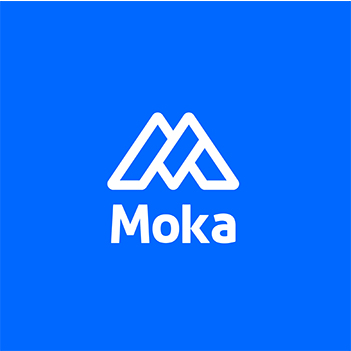Top Mistakes in Recruiting Collaboration and How to Fix Them

Recruitment isn’t just about finding the right candidates. It’s about building a team that works together seamlessly. When collaboration thrives, your hiring process becomes smoother and more effective. Did you know teams with strong collaboration can outperform others by up to 20%? They’re also six times more likely to excel in a teamwork-driven culture. On the flip side, poor collaboration while recruiting can lead to delays, inefficiencies, and even higher turnover rates. By addressing common recruiting mistakes, you can transform your hiring process into a successful talent acquisition strategy that benefits everyone involved.
Key Takeaways
Good communication is key in hiring. Set clear goals and use tools like Applicant Tracking Systems to share updates with everyone.
Assign clear roles in your hiring team. Use tools like RACI charts to avoid confusion and make sure everyone is responsible.
Focus on the candidate's experience. Give updates quickly and stay in touch to build trust and attract great candidates.
Mix technology with personal interaction. Use automation to save time but connect personally during important hiring steps.
Match your hiring plan with business goals. Work with leaders to make a plan for growth and check often if it’s working well.
Poor Communication in Recruitment

Communication is the backbone of any successful recruitment process. When it breaks down, it can lead to confusion, delays, and even missed opportunities. Let’s explore why communication issues happen and how you can fix them.
Causes of Communication Issues
Misaligned expectations between stakeholders
One of the most common mistakes in recruitment is when stakeholders aren’t on the same page. For example, hiring managers might expect a candidate with specific skills, while recruiters focus on a broader talent pool. This misalignment can lead to frustration and wasted time. Did you know 73% of job seekers feel discouraged when their expectations don’t match the reality of the hiring process? Miscommunication like this can hurt your employer brand and make candidates think twice about joining your team.
Lack of clear communication protocols
Without a clear plan for how your team communicates, things can quickly spiral out of control. Time constraints and resource shortages often make it harder to keep everyone informed. Manual processes, like emailing updates or tracking candidates on spreadsheets, can slow things down even more. When communication isn’t streamlined, candidates may feel ignored. For instance, 39% of applicants expect acknowledgment of their application within 24 hours, but many never hear back.
Fixing Communication Problems
Establish clear goals and expectations
Start by setting clear goals for your recruitment strategy. What kind of candidate are you looking for? What’s the timeline for hiring? When everyone knows the plan, it’s easier to stay aligned. Use tools like RACI charts to define roles and responsibilities, ensuring no one steps on each other’s toes.
Use tools like Applicant Tracking Systems (ATS) for updates
Technology can be your best friend in collaborative hiring. An ATS helps you track candidates, share updates, and keep everyone in the loop. Automation ensures no one gets left behind, and it frees up your team to focus on building relationships with candidates.
Schedule regular team check-ins
Don’t underestimate the power of a quick meeting. Weekly or bi-weekly check-ins give your team a chance to discuss progress, address challenges, and adjust plans. These meetings also help prevent poor collaboration while recruiting by keeping everyone on the same page.
By addressing these recruiting mistakes, you’ll not only improve communication but also create a smoother, more efficient hiring process. Candidates will feel valued, and your team will work together more effectively.
Undefined Roles in Recruitment Teams
When roles in your recruitment team aren’t clearly defined, things can get messy fast. You might notice tasks slipping through the cracks or team members stepping on each other’s toes. Let’s break down why this happens and how you can fix it.
Consequences of Role Ambiguity
Overlapping responsibilities causing inefficiency
When everyone’s trying to do everything, no one does anything well. Overlapping responsibilities lead to duplicated efforts and wasted time. For example, two team members might reach out to the same candidate, creating confusion and making your team look unorganized. This inefficiency can slow down the hiring process and frustrate both your team and potential hires.
Missed critical tasks in the hiring process
On the flip side, unclear roles can mean important tasks get overlooked. Maybe no one follows up with a promising candidate, or a key interview doesn’t get scheduled. These mistakes can cost you top talent. Did you know that 60% of job seekers lose interest in a role if they don’t hear back within two weeks? Missing critical steps can hurt your reputation and make it harder to attract great candidates.
Defining Roles and Responsibilities
Use frameworks like RACI charts
A RACI chart is a game-changer for defining roles. It categorizes team members as Responsible, Accountable, Consulted, or Informed for each task. This structure prevents confusion and ensures accountability. Other tools like workflow mapping and organizational charts can also help clarify who does what at every stage of the hiring process.
Assign ownership for each recruitment stage
Break down your recruitment process into stages, like sourcing, interviewing, and onboarding. Then, assign a specific person to own each stage. This approach boosts productivity because everyone knows exactly what they’re responsible for. Plus, it makes it easier to track progress and address any issues.
Ensure clarity through team discussions
Don’t assume everyone understands their role—talk about it! Regular team discussions help you clarify responsibilities and address any overlaps. When everyone’s on the same page, collaboration improves, and conflicts decrease. Teams with clear roles often see better problem-solving and stronger results.
By defining roles in your recruitment team, you’ll create a smoother process and a more productive team. You’ll also reduce misunderstandings and make it easier to bring new team members up to speed. It’s a win-win for everyone involved!
Neglecting Candidate Experience

When it comes to hiring, the way you treat job candidates can make or break your recruitment process. Neglecting the candidate experience is one of the most common hiring mistakes, and it can have long-term consequences for your employer brand. Let’s dive into the pitfalls and how you can fix them.
Common Recruitment Mistakes with Candidates
Delayed responses and lack of follow-up
Have you ever applied for a job and never heard back? It’s frustrating, right? Failing to follow up with candidates after interviews or applications sends the wrong message. It makes them feel undervalued and can damage your company’s reputation. In fact, 72% of candidates share negative experiences with their networks, which can discourage top talent from applying in the future.
Inconsistent communication from team members
Imagine receiving conflicting updates from different team members. It’s confusing and unprofessional. This happens when recruitment teams don’t align their messaging. Candidates might feel like they’re being passed around, which erodes trust. Consistency is key to building strong relationships with job candidates.
Mistake | Explanation |
|---|---|
Failing to follow up with candidates | Not reaching out post-interview can signal disinterest and harm candidate perception of the hiring process. |
Inefficient screening process | A lack of structure can lead to wasted time with unqualified candidates, negatively impacting the overall recruitment flow. |
Not building deep relationships with candidates | Failing to engage with candidates can erode trust and loyalty, which are crucial for a positive recruitment experience. |
Not providing a positive candidate experience | A negative experience can lead to poor reviews and lower acceptance rates, affecting the employer's reputation. |
Improving Candidate Experience
Streamline communication with candidates
Use tools like Applicant Tracking Systems (ATS) or Candidate Relationship Management (CRM) platforms to keep candidates informed. These tools automate updates and ensure no one gets left in the dark. AI chatbots can also provide instant responses, keeping candidates engaged throughout the process.
Provide timely updates on application progress
Candidates appreciate knowing where they stand. Regular updates, even if it’s just to say the process is ongoing, can make a huge difference. Be transparent about timelines and next steps. For example, let candidates know when they can expect feedback after an interview.
Ensure consistent messaging across the team
To avoid mixed signals, create a set of templates for common communication points like interview invitations or rejection letters. Train your team to use these templates and personalize them when needed. Automation tools can also help maintain consistency while saving time.
Tip: Personalizing your communication shows candidates you value them as individuals, not just as applicants.
By focusing on the candidate experience, you’ll attract high-quality talent and improve your employer brand. Remember, job candidates are evaluating you just as much as you’re evaluating them. A positive experience can turn them into advocates for your company, even if they don’t get the job.
Overdependence on Recruitment Technology
Recruitment technology can be a game-changer, but relying on it too much can backfire. While tools like AI and automation simplify hiring, they can’t replace the human touch. Let’s explore the risks of overdependence and how you can strike the right balance.
Problems with Overreliance on Technology
Impersonal interactions due to automation
Automation can streamline communication, but it often feels robotic. Candidates want to feel valued, not like they’re talking to a machine. AI struggles to build genuine relationships or understand a candidate’s unique aspirations. For example, while AI can send updates, it can’t network or persuade top talent to join your team. Personal interaction is still key to creating a positive candidate experience.
Ignoring human judgment in decision-making
AI can’t always interpret context or handle exceptional cases. For instance, Amazon’s recruitment tool penalized female candidates because of biased training data. This highlights the ethical risks of relying solely on technology. Similarly, Facebook’s algorithm promoted fake news, showing how automation can misfire without human oversight. You need human judgment to catch these issues and make fair decisions.
Tip: Use technology as a tool, not a replacement. It should enhance your efforts, not take over entirely.
Balancing Technology and Human Input
Use technology to support, not replace, human efforts
Technology works best when it complements your team. For example, Unilever uses AI to screen entry-level applicants but ensures humans make the final call. Google focuses on skills-based hiring, using tech to widen its talent pool while keeping the process human-centered. These companies show how blending tech with human insight leads to better outcomes.
Train teams to use tools effectively while maintaining a personal touch
Training is essential for using recruitment tech wisely. Practice sessions like simulations and role-plays can help your team master new tools. Encourage peer reviews and provide feedback to foster collaboration. Regularly update training to reflect industry trends and set KPIs to measure success. A well-trained team knows when to rely on tech and when to step in personally.
By balancing technology with human input, you’ll create a recruitment process that’s efficient and empathetic. Candidates will appreciate the personal touch, and your team will make smarter, more ethical hiring decisions.
Misalignment with Business Goals
When your recruitment strategy doesn’t align with your business goals, it’s like trying to solve a puzzle with mismatched pieces. You might fill roles quickly, but are they the right ones? Let’s explore some common recruiting mistakes and how you can fix them.
Common Recruitment Mistakes in Strategy
Focusing on short-term needs over long-term goals
It’s tempting to focus on filling immediate vacancies, but this short-sighted approach can hurt your company in the long run. A poorly designed recruitment strategy often leads to missed opportunities and difficulty attracting top talent. For example, hiring someone who fits today’s needs but lacks growth potential can result in higher turnover. Remember, 69% of employees are more likely to stay for at least five years if their work aligns with the company’s mission and values.
Hiring misaligned with company culture and values
Job candidates who don’t align with your company culture can disrupt team dynamics. Misalignment happens when recruiters and hiring managers don’t share the same vision of success. Without early and honest conversations, you risk hiring someone who doesn’t fit your values. This can lead to dissatisfaction and even higher attrition rates. Attracting the right candidates who match both the skills and culture you need is crucial for long-term success.
Aligning Recruitment with Business Objectives
Collaborate with leadership to understand goals
Start by sitting down with leadership to identify key objectives. What does the company need to grow? What kind of talent will help achieve those goals? Early collaboration ensures everyone works toward the same priorities. Setting clear expectations also helps recruiters and hiring managers stay aligned.
Develop a hiring plan for long-term growth
A strong talent acquisition strategy focuses on the future. Conduct a thorough business analysis to assess your talent needs. Then, create a hiring plan that supports long-term growth. Highlight your employer brand to attract high-quality talent. A well-defined plan ensures you’re not just filling roles but building a team that drives success.
Regularly review recruitment strategies for alignment
Don’t set it and forget it. Regularly review your recruitment strategy to ensure it aligns with your business goals. Companies that do this see a 21% increase in employee productivity and attract 30% more job candidates. Measuring recruitment metrics helps you track performance and make adjustments as needed. This proactive approach keeps your hiring process on track.
By aligning your recruitment strategy with business objectives, you’ll attract job candidates who fit your company’s culture and goals. This not only improves retention but also boosts productivity. A little planning goes a long way in building a team that thrives.
Lack of Feedback in Recruitment Processes
Feedback is the secret ingredient that can transform your recruitment process from good to great. Yet, many teams struggle to implement it effectively. Let’s explore why feedback loops often get overlooked and how you can build a culture that thrives on effective feedback.
Why Feedback Loops Are Neglected
Teams failing to review past recruitment efforts
Skipping reviews of past efforts is a common pitfall. Without reflection, your team misses out on valuable lessons. Communication breakdowns often lead to misunderstandings between recruiters and hiring managers. For example, unclear expectations about feedback can result in ineffective recruitment strategies. Without structured feedback mechanisms, it’s hard to pinpoint what’s working and what’s not.
Resistance to change or improvement
Change can feel uncomfortable, especially when it challenges the status quo. Some teams resist feedback because they fear criticism or don’t see its value. Siloed decision-making also plays a role. When HR, hiring managers, and talent acquisition teams operate independently, feedback often gets lost. This disconnect can lead to policies that don’t align with departmental needs, leaving job candidates frustrated.
Building a Feedback Culture
Conduct post-hiring reviews for improvement
Post-hiring reviews are a game-changer. They help you identify what went well and what needs improvement. Regular feedback sessions allow your team to address issues promptly, improving both team performance and the candidate experience. For example, reviewing why a top candidate declined an offer can help you refine your approach for future hires.
Encourage open communication and constructive feedback
Open communication starts with clarity and empathy. Be specific in your feedback and balance commendation with critique. Leaders should model this behavior by giving constructive feedback openly. Create safe spaces where team members feel comfortable sharing their thoughts. Anonymous surveys can also encourage honest input. When everyone feels heard, morale and collaboration improve.
Use data to track and enhance recruitment performance
Data is your best friend when it comes to feedback. Use metrics like time-to-hire, candidate drop-off rates, and offer acceptance rates to evaluate your recruitment process. These insights help you make informed decisions and adapt to changing needs. For example, tracking delays in feedback delivery can highlight bottlenecks and improve response times for job candidates.
Building a feedback culture isn’t just about fixing mistakes. It’s about fostering trust, collaboration, and continuous improvement. When your team embraces feedback, you’ll see better results and happier job candidates.
Recruitment mistakes can derail your hiring efforts, but fixing them leads to better outcomes. Avoid poor collaboration while recruiting by defining roles, improving communication, and aligning with business goals. Streamlining processes and focusing on candidate experience helps you attract top talent.
When you avoid these pitfalls, you’ll see benefits like stronger hires, a cohesive team, and a better employer brand. Start fostering collaboration by setting shared goals, promoting transparency, and encouraging feedback. Small changes can make a big difference in building a recruitment process that works for everyone.
Remember, great hiring starts with great teamwork!
FAQ
What is the most common mistake in the recruitment process?
The most common mistake is poor communication. Misaligned expectations and unclear updates can lead to delays and confusion. Fix this by setting clear goals, using tools like ATS, and scheduling regular team check-ins.
How can you improve collaboration in the recruitment process?
Start by defining roles and responsibilities. Use frameworks like RACI charts and assign ownership for each stage. Regular team discussions also help everyone stay aligned and avoid overlaps.
Why is candidate experience important in the recruitment process?
A positive candidate experience attracts top talent and strengthens your employer brand. Candidates who feel valued are more likely to accept offers and recommend your company to others.
How do you balance technology and human input in recruitment?
Use technology to automate repetitive tasks but keep personal interactions for critical moments. Train your team to use tools effectively while maintaining a human touch to build genuine connections.
What’s the best way to align recruitment with business goals?
Collaborate with leadership to understand long-term objectives. Develop a hiring plan that supports growth and regularly review strategies to ensure alignment with company goals.
See Also
Identifying And Solving Recruitment Automation Challenges Effectively
Enhancing Team Collaboration With Applicant Tracking Systems
Holistic Approaches To Streamline The Recruitment Journey
From recruiting candidates to onboarding new team members, MokaHR gives your company everything you need to be great at hiring.
Subscribe for more information

